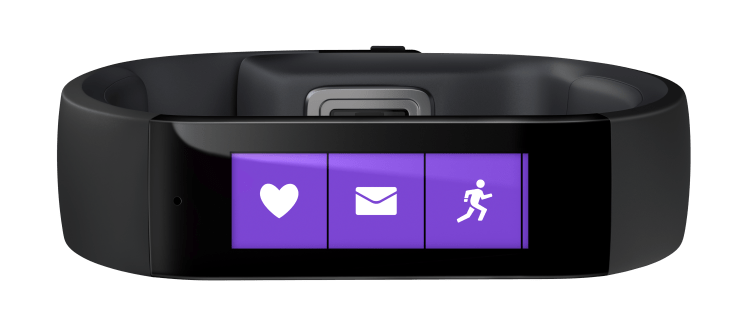After months of rumors, Microsoft has announced a new health-focused wearable device called the ‘Band.’
The new device contains 10 sensors for tracking steps, heart rate, sleep, and other biometrics.
A UV sensor measures sun exposure, and a galvanic skin response sensor can tell you if you’re stressed out. Other sensors include an optical heart rate sensor, a 3-axis accelerometer/gyro, a gyrometer, an ambient light sensor, and a skin temperature sensor. There’s also a GPS radio for tracking routes, and a microphone for dictating notes on the run.
The biometrics data collected by the Band is sent to the cloud, and also displayed in the Microsoft Health app, which runs on Windows Phone, Android, and iOS devices.
The Health app also provides guided workouts provided by Gold’s Gym, and Shape and Men’s Fitness magazines. And, like most fitness apps, it maps runs and bike rides, and creates a graphic display of sleep patterns.
There’s something new here, too. The app can pull data from other Microsoft services like Outlook, so that it can show how the activities during your day affect your stress levels and sleep.
The cloud-based “Microsoft Health Service” allows the Health app to combine Band data with data from other apps and devices. This means that in the Health app users can see analytics and insights from combining data from various third party health apps like RunKeeper and MyFitnessPal, for example. The app and the wearable integrate with HealthVault — Microsoft’s answer to Apple’s HealthKit integration platform.
If any of this sounds familiar it’s because Microsoft’s health ecosystem is set up a lot like Apple’s. There’s a cloud integration platform (Microsoft Health Service or HealthVault), an app that can integrate third party health data from the cloud (Health), and now there’s a sensor-laden wearable device to generate data for the platform and the app (Apple’s device, of course, is the Watch).
The Band, which will go on sale Thursday for $199 at Microsoft’s physical and online stores, doesn’t look much like a full-blown smartwatch. Rather, it uses a bracelet design with a large display for reading fitness metrics or reading notifications.
Here’s Microsoft’s demo video for the Band and the app:
Like some other recently-announced fitness trackers, the Band offers some features that were previously reserved for smartwatches. Your Android, iOS, or Windows phone can send notifications to the Band, including email messages, calendar reminders, phone calls received, text messages, social updates from Facebook and Twitter, weather, and finance.
You can also dictate notes to the device and set reminders with your voice if you have the Cortana personal assistant running on a Windows phone.
With the market for health and fitness trackers growing quickly, it’s no surprise to see Microsoft jump into the game. There were signs, and a lot of rumors, signaling the release months before the actual announcement came. A Microsoft smartwatch design patent was published in June. And a Microsoft wearable — the Band, no doubt — was approved by the FCC last week.
Kia Kokalitcheva contributed to this report.
VentureBeat's mission is to be a digital town square for technical decision-makers to gain knowledge about transformative enterprise technology and transact. Learn More

